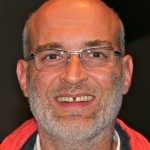Link to Pubmed [PMID] – 9247928
Mol. Biochem. Parasitol. 1997 Aug;87(2):169-81
We describe here a new Plasmodium falciparum antigen, asparagine and aspartate rich protein 2 (PfAARP2) of 150 kDa, which is encoded by a unique gene on chromosome 1. PfAARP2 is first expressed 12 h post-invasion and accumulates in trophozoites and schizonts. Immunofluorescence studies indicate that PfAARP2 is translocated into the red blood cell cytoplasm. The central region of Pfaarp2 contains blocks of repetitions encoding asparagine and aspartate residues, which define a new family of related genes dispersed on different chromosomes, and two members of this family have also been identified. Interestingly, the non-repeated N- and C-termini of PfAARP2 display significant similarity to two yeast and human predicted proteins, and its possible function is discussed.

